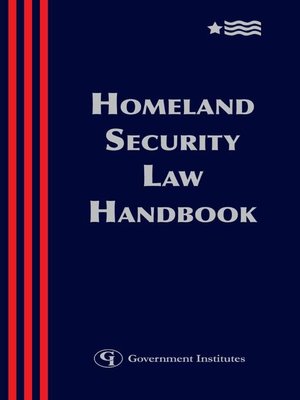
Sign up to save your library
With an OverDrive account, you can save your favorite libraries for at-a-glance information about availability. Find out more about OverDrive accounts.
Find this title in Libby, the library reading app by OverDrive.



Search for a digital library with this title
Title found at these libraries:
| Library Name | Distance |
|---|---|
| Loading... |
The new Homeland Security Law Handbook provides a comprehensive reference book for business, industry, and government as well as those faced with the new legal and security issues raised by new public laws, a new regulatory framework, and a new Department of Homeland Security. Written by legal experts from four law firms, it covers the major issues involved with homeland security.
Part I covers broad concepts and cross-cutting issues in this emerging field as well as the various legal mandates that now apply to homeland security. An analysis, summary, and political context of homeland security statutes and their subsequent regulatory mandates are also discussed.
Part II includes detailed discussions of public safety issues, including aviation and transportation security, port security, and chemical security; the public health issues of bioterrorism and air, food, and water supply contamination; border and immigration concerns; cyber security; appropriations, grants, and contracts; insurance and workplace issues; and information and disclosure issues in audits.
Part III covers the creation, mandate, and organization of the new cabinet department with its powers, practices, procedures, and responsibilities. Each of the four Directorates and their organization, function, major issues, and transitional challenges are also analyzed.
Part I covers broad concepts and cross-cutting issues in this emerging field as well as the various legal mandates that now apply to homeland security. An analysis, summary, and political context of homeland security statutes and their subsequent regulatory mandates are also discussed.
Part II includes detailed discussions of public safety issues, including aviation and transportation security, port security, and chemical security; the public health issues of bioterrorism and air, food, and water supply contamination; border and immigration concerns; cyber security; appropriations, grants, and contracts; insurance and workplace issues; and information and disclosure issues in audits.
Part III covers the creation, mandate, and organization of the new cabinet department with its powers, practices, procedures, and responsibilities. Each of the four Directorates and their organization, function, major issues, and transitional challenges are also analyzed.






